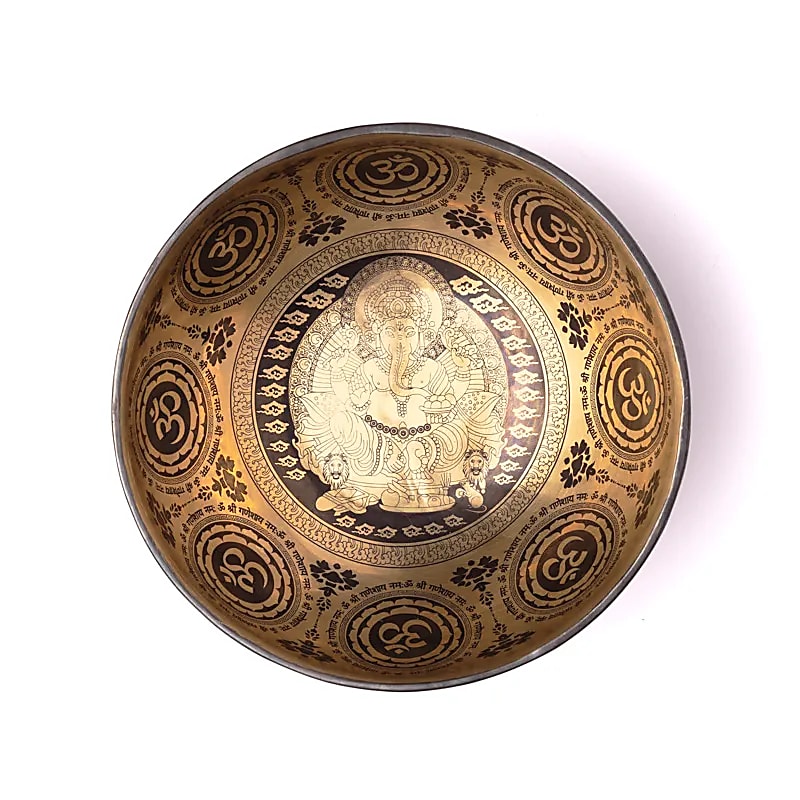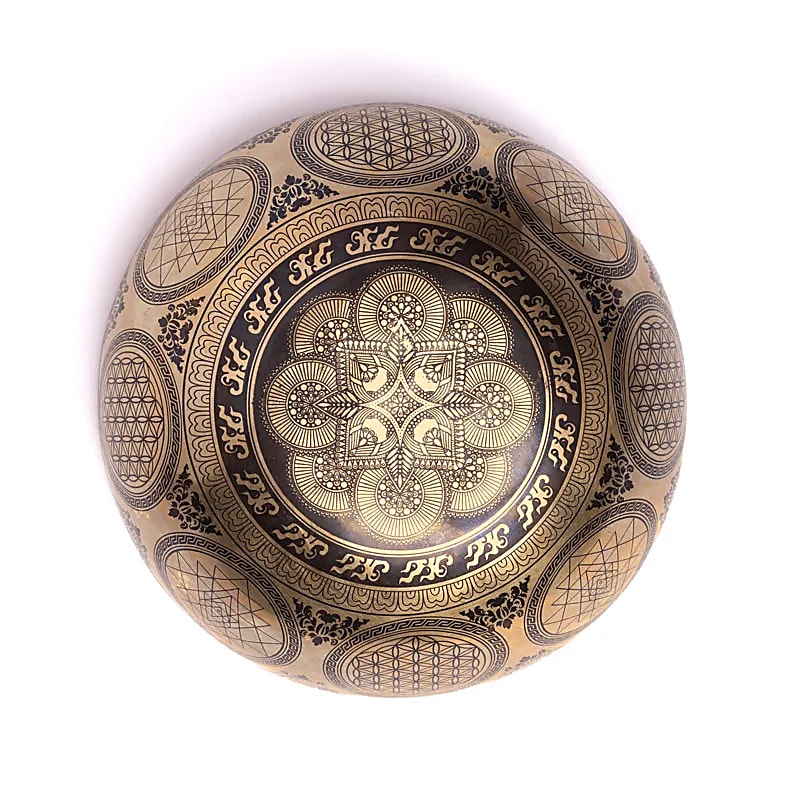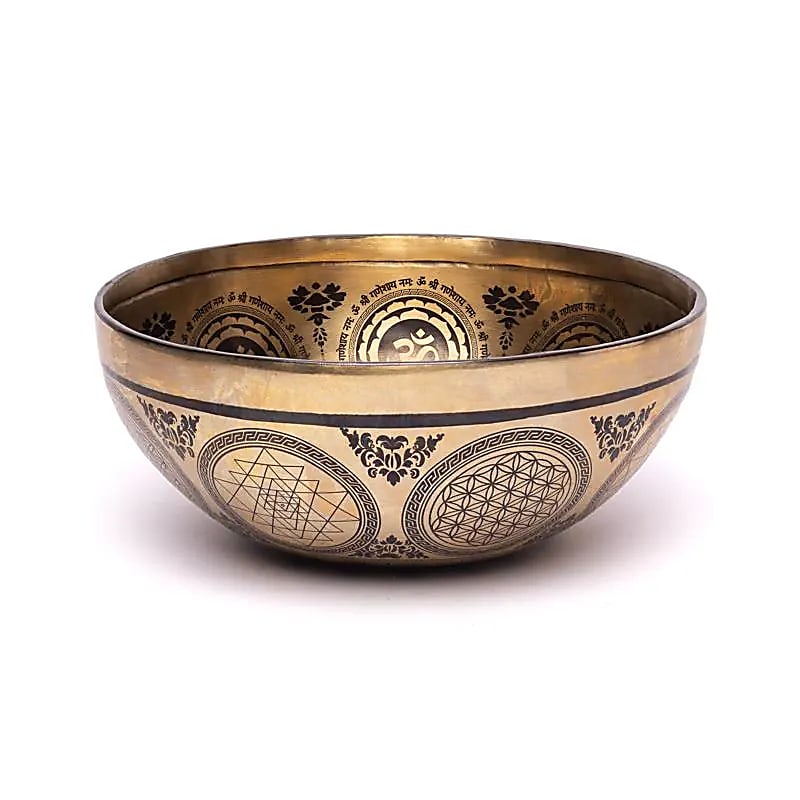Bowl in 7 metals with engraving of 'Ganesh', size 22/24 centimeters - approximately +/- 1400/1600 grams. Sold with a suitable mallet! Magnificent piece 'handmade' in Nepal!
Bowl in 7 metals with engraving of 'Ganesh', size 22/24 centimeters - approximately +/- 1400/1600 grams. Sold with a suitable mallet! Magnificent piece 'handmade' in Nepal!
Couldn't load pickup availability
About the product:
Ganesh/Ganesha – Dispeler of Obstacles
The inner engraving depicts Ganesha with four arms: holding a modaka (treat), a pāśa (lasso), an abhaya mudrā (protective gesture), and a stylized attribute. He is seated on a lotus throne, accompanied by his mount, a mouse.
Six circular medallions around him bear the symbol "ॐ" and repeat the mantra "ॐ श्री गणेशाय नमः" (Om Shri Ganeshaya Namaha), invoking blessings for new beginnings and the removal of obstacles.
Traditional lotus motifs fill the spaces between the symbols.
The presence of Ganesha is believed to remove blockages and promote auspicious beginnings.
This bowl is therefore particularly suited to meditations or rituals focused on new projects, professional endeavors, or creative impulses. It also offers resonant clarity in sound therapy.
- Made in Nepal
In 7 metals.
Click here to see our mallet selections
Please note: This incredible bowl is like a work of art, with all the engravings that take several weeks to complete. Each bowl is unique!
The percentages of metals, diameter and thickness of the different bowls provide the specific sound and harmonics of each singing bowl.
Each bowl is therefore unique.
Handmade singing bowl made of copper, tin and 7 noble metals: copper, tin, nickel, zinc, iron, lead, mercury, silver.
Please note: All our handmade singing bowls are sorted by weight. The diameter mentioned is an approximate guideline, so you have a general idea of the bowl's width.
Information about the process of hammering Tibetan singing bowls: The process of hammering singing bowls is entirely done by hand.
Each singing bowl is hammered following a series of procedures that will give the bowl the perfect shape.
During the manufacturing phase, different metals that make up the bowl are melted in a furnace (copper, tin, iron, lead, gold and silver) depending on the type of bowl desired, such as bronze bowls or those of the seven metals.
The molten metal is then poured into a mold to obtain a metal disc of the desired size and thickness.
At this stage, the metal disc is modeled after being weighed and measured very precisely and then is classified according to the type of bowl to come.
As for the actual hammering process, 4 or 5 discs are stacked on top of each other and then heated until they become incandescent.
The formed glowing metal disc is then hammered by skilled craftsmen until the metal is no longer hot; then it is heated again and hammered again.
These two operations, heating and hammering, continue until the desired shape and size are achieved (which explains why hammered singing bowls can vary by a few centimeters from one another). When hammering the bowls, the metal disc should be beaten while it is still hot, because it is more flexible.
Once cooled, in fact, the metal loses its flexibility and becomes increasingly brittle, thus risking cracks that would occur if struck. Once the desired shape is achieved, the stages of manufacturing the bowl itself begin.
Each bowl is brought to the desired shape and size, repeating the heating and hammering phase if necessary.
Once the desired shape and size are achieved, the bowl is hammered to perfection. Individual bowls are then chiseled and finished inside and out.
Attention please!
Share






